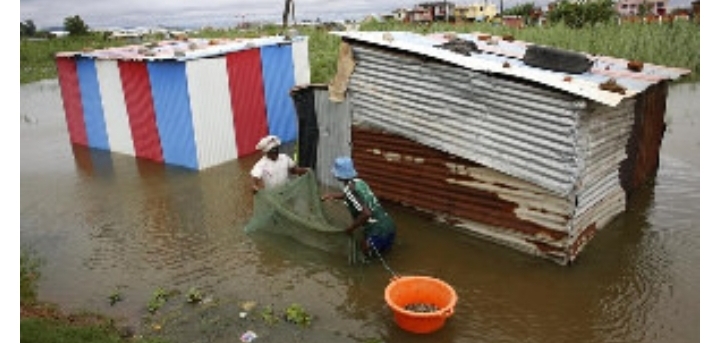How tropical storms have hurt Mozambique

The cyclones have left the Maputo government concerned, especially since in recent years Mozambique has been hit by strong storms and cyclones. This year, however, has seen more cyclones – five within a short span of two months.
One of the worst natural disasters to hit southern Africa in at least two decades happened in 2019 when Cyclones Idai and Kenneth killed at least 1,000 people in Mozambique.
In 2021, the Tropical Chalane storm, which passed through Madagascar and Zimbabwe, killed seven people in central Mozambique. Between January and February this year, Cyclones Ana, Batsirai, Dumako and Emnati hit Mozambique, and a fifth storm, Cyclone Gombe hit the country last week.
Mozambique is one of the poorest countries in the world with most of its population living on less than $1 a day. It ranks 181st on the UN Human Development Index out of 189 countries.
The UN Food and Agriculture Organisation (FAO) attributes global warming and climate change as the reason for cyclones and droughts in the region.
“The surface of the Indian Ocean has warmed faster than the global average, which is forecast to give rise to more cyclones and more droughts,” FAO says.
The World Bank’s research found that climate change and natural disasters may push as many as 132 million people into poverty by 2030, and cause 216 million people to migrate internally by 2050.
Last week, Cyclone Gombe made landfall in southern Africa and, so far, Mozambique is the hardest hit in terms of death and damages compared to Madagascar and Malawi.
Currently, the southern African region is at the climax of its rainy and cyclonic seasons which is expected to run until April or May. This suggests that the region could experience more storms.
Cyclone Gombe, which reached the Mozambican coast early Friday morning with an intense cyclone category, heavy rains, and winds, killed 15 people, injured 50, and displaced 11,000, according to the National Institute for Disaster Risk Reduction and Management (INGD) data released on Monday, March 14.
Earlier, the International Organisation for Migration (IOM) said that more than 115,000 people would be affected by the storm in Nampula and Zambezia provinces and local authorities fear that the death toll could rise during the next couple of days as some districts remain inaccessible.
Zambezia and Nampula are among the country’s best agricultural provinces and account for about 40 percent of the national population.
Cyclone Gombe also affected other provinces such as Tete, Niassa, Sofala, and Manica.
“What is really important is to replenish what is basic: water, energy, access roads, and then we can find the solutions for people to be able to return to their homes,” Prime Minister Adriano Maleiane said Monday as he visited Nampula province.
The storms, which destroyed agricultural fields, have impacted Mozambique´s economy leaving record destruction and desperation. The destruction has also led to fears of food insecurity and suffering as the agricultural sector remains the mainstay of Mozambique’s economy, employs a large percentage of the total active labour force, and contributes to more than a quarter of the GDP.
“Chronic food insecurity is exacerbated by climate shocks and natural disasters such as floods, droughts, and cyclones,” the USAid says.
According to the World Bank, about two-thirds of the Mozambicans live and work in rural areas and mainly in the agricultural sector.





